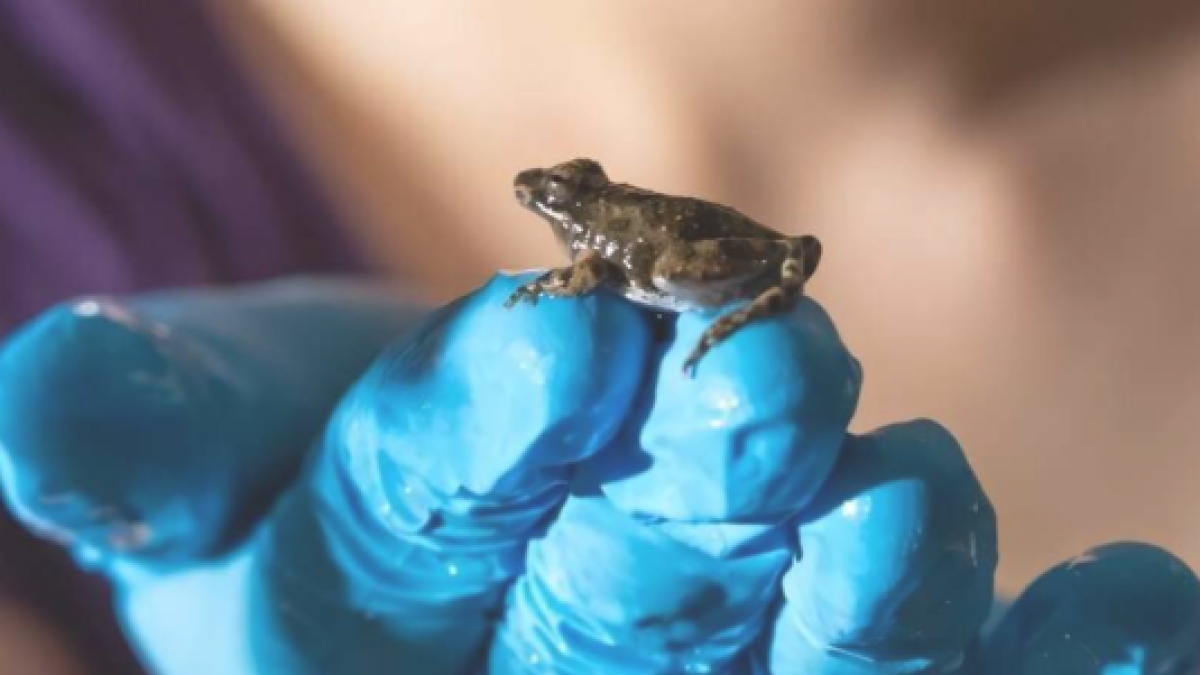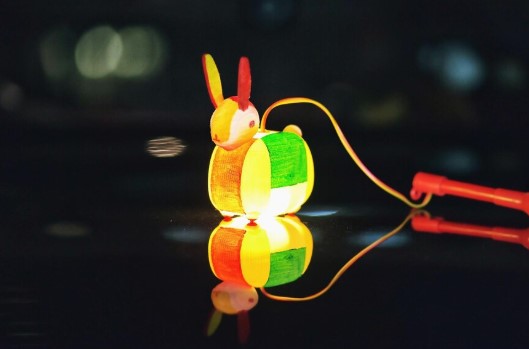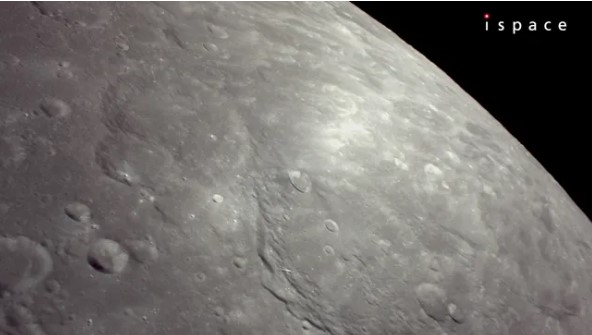The Incredible Science Behind Cricket Frogs' Unique Acrobatics

Do frogs have the ability to walk on water?
A number of species have captivated onlookers with their ability to jump into the air and skip from side to side from a pond's surface as though it were land. One such breed is the cricket frog, which is indigenous to North Carolina and Virginia. Future robots, watercraft, and other equipment may be inspired by the way these frogs move in the water.
One of the researchers studying the cricket frog's unusual ability to "skitter," or jump repeatedly in succession, is Jake Socha, the Samuel Herrick Professor in Mechanical Engineering. The first author of the team's results, Talia Weiss, a graduate researcher, was published in the Journal of Experimental Biology.
"Skittering is not actually a well-defined word for this behavior -- one naturalist used it to describe a 'jumping on water' behavior in frogs in 1949, and since then, it's been used for this type of locomotion in all the following literature," Weiss stated. "Part of this research is not only studying this behavior in cricket frogs, but to try and give 'skittering' a more precise, scientific definition."
What do they do? In their research, Socha's colleagues discovered that although the prevailing consensus is that frogs do not sink when they cross water, this may nevertheless necessitate a highly specialized anatomy. What distinguishes this frog from others?
"Our lab has studied a range of animals, and many exhibit fascinating behaviors in navigating their environment," Socha stated. "The common cricket frog, which lives close by, nonetheless astounded us with its talents, igniting our interest in learning more about the living world.
For high-speed frogs, high-speed video
One of the tiniest frogs in North America, cricket frogs can fit comfortably on the thumb of the hand of an ordinary adult. The researchers employed high-speed videography to watch the cricket frog move. They documented the frog's leaping motions both on land and in the water, observing how their legs moved as they moved through each.
The frogs actually sink with every jump, the team discovered. Although the term "skittering" conjures up an image of the frogs jumping around freely with only their feet poking over the water's surface, the recordings painted a different picture. Socha, Weiss, and their teammates noticed that a frog's whole body would submerge every time it descended from a leap. It moved more like a plop and a jump than a frog freely jumping and dancing across the water. Their movements might be better described as "porpoising," after the way a dolphin or porpoise jumps into the air from below the water's surface.
A number of species have captivated onlookers with their ability to jump into the air and skip from side to side from a pond's surface as though it were land. One such breed is the cricket frog, which is indigenous to North Carolina and Virginia. Future robots, watercraft, and other equipment may be inspired by the way these frogs move in the water.
One of the researchers studying the cricket frog's unusual ability to "skitter," or jump repeatedly in succession, is Jake Socha, the Samuel Herrick Professor in Mechanical Engineering. The first author of the team's results, Talia Weiss, a graduate researcher, was published in the Journal of Experimental Biology.
"Skittering is not actually a well-defined word for this behavior -- one naturalist used it to describe a 'jumping on water' behavior in frogs in 1949, and since then, it's been used for this type of locomotion in all the following literature," Weiss stated. "Part of this research is not only studying this behavior in cricket frogs, but to try and give 'skittering' a more precise, scientific definition."
What do they do? In their research, Socha's colleagues discovered that although the prevailing consensus is that frogs do not sink when they cross water, this may nevertheless necessitate a highly specialized anatomy. What distinguishes this frog from others?
"Our lab has studied a range of animals, and many exhibit fascinating behaviors in navigating their environment," Socha stated. "The common cricket frog, which lives close by, nonetheless astounded us with its talents, igniting our interest in learning more about the living world.
For high-speed frogs, high-speed video
One of the tiniest frogs in North America, cricket frogs can fit comfortably on the thumb of the hand of an ordinary adult. The researchers employed high-speed videography to watch the cricket frog move. They documented the frog's leaping motions both on land and in the water, observing how their legs moved as they moved through each.
The frogs actually sink with every jump, the team discovered. Although the term "skittering" conjures up an image of the frogs jumping around freely with only their feet poking over the water's surface, the recordings painted a different picture. Socha, Weiss, and their teammates noticed that a frog's whole body would submerge every time it descended from a leap. It moved more like a plop and a jump than a frog freely jumping and dancing across the water. Their movements might be better described as "porpoising," after the way a dolphin or porpoise jumps into the air from below the water's surface.
Did you know? You can comment on this post! Just scroll down
Launching from underwater
Because they move so quickly, cricket frogs have historically given the impression that they are dancing over the water when observed with the naked eye.
The scientists released the frogs into a 20-gallon glass tank in order to capture this incredibly quick move. To record the action above and below the water's surface, high-speed cameras with a maximum frame rate of 500 frames per second were pointed from the glass tank's side. The squad caught their escape as the frogs leaped.
After that, the video was slowed to a very slight reduction in speed. Team members' startling discovery upon viewing the video was that the frogs did, in fact, sink.
"It's fascinating how easily we can be fooled by fast animal movements," Socha added. In this instance, a frog that looks like a skipping stone is tricking us by repeatedly jumping and dunking. Although frogs are excellent jumpers, the majority of them do not display this porpoising habit, and the reason for this is yet unknown. Does the frog's leap have a unique quality, or is it just a result of its diminutive size?
Team members were able to watch them in slow motion and see how the frog moved as its limbs expanded and retracted. Additionally, they observed that its body's angle to the waterline contributed to its capacity for self-balancing in the water.
Each jump cycle was dissected into:
The scientists released the frogs into a 20-gallon glass tank in order to capture this incredibly quick move. To record the action above and below the water's surface, high-speed cameras with a maximum frame rate of 500 frames per second were pointed from the glass tank's side. The squad caught their escape as the frogs leaped.
After that, the video was slowed to a very slight reduction in speed. Team members' startling discovery upon viewing the video was that the frogs did, in fact, sink.
"It's fascinating how easily we can be fooled by fast animal movements," Socha added. In this instance, a frog that looks like a skipping stone is tricking us by repeatedly jumping and dunking. Although frogs are excellent jumpers, the majority of them do not display this porpoising habit, and the reason for this is yet unknown. Does the frog's leap have a unique quality, or is it just a result of its diminutive size?
Team members were able to watch them in slow motion and see how the frog moved as its limbs expanded and retracted. Additionally, they observed that its body's angle to the waterline contributed to its capacity for self-balancing in the water.
Each jump cycle was dissected into:
- Takeoff from a location below the water
- Time spent in the air after a leap, or aerial
- Back in the ocean, re-entry
- Recovering and starting over for the subsequent leap
Within a fraction of a second, the frog would launch itself fully immersed, pushing its body above the water with its outstretched feet. As it traveled through the air, its front legs shifted from pressing against its torso to reaching forward, while its rear legs remained extended. On re-entry, the extended front legs strike the water first, and as it sinks, the back legs remain extended. The rear legs retract and bend back into a leaping position as it sinks. The movement is repeated with another jump.
In essence, it's a belly flop.
The group saw frogs perform up to eight consecutive jumps, each of which was completed in less than a second.
While comprehending skittering is a significant finding for the field of biology, it also bears other secrets. The future of bio-inspired robots has a new physical foundation thanks to this research. It might be used for an amphibious drone that measures the depth of the water or a water testing device that needs to be quickly deployed. These cutting-edge gadgets can learn from nature and employ tried-and-true techniques that frogs have been employing for generations.
In essence, it's a belly flop.
The group saw frogs perform up to eight consecutive jumps, each of which was completed in less than a second.
While comprehending skittering is a significant finding for the field of biology, it also bears other secrets. The future of bio-inspired robots has a new physical foundation thanks to this research. It might be used for an amphibious drone that measures the depth of the water or a water testing device that needs to be quickly deployed. These cutting-edge gadgets can learn from nature and employ tried-and-true techniques that frogs have been employing for generations.
Article Posted 5 Months ago. You can post your own articles and it will be published for free.
No Registration is required! But we review before publishing! Click here to get started
One Favour Please! Subscribe To Our YouTube Channel!
468k
Cook Amazing Nigerian Dishes, Follow Adorable Kitchen YouTube Channel!
1.1m
Like us on Facebook, Follow on Twitter
React and Comment
Click Here To Hide More Posts Like This
Watch and Download Free Mobile Movies, Read entertainment news and reports, Download music and Upload your own For FREE.
Submit Your Content to be published for you FREE! We thrive on user-submitted content!
But we moderate!

















